Previous Page (2008-2012 Asparagus Bed)
Index:
- Page 1 Making the veg patch 2007-8
- Page 2 Creating a Cropping Plan and Crop Rotation
- Page 3 2008-2012 Asparagus Bed
- Page 4 2012 Raised Beds and Windbreak (This page)
- Page 5 2014 Woven Weed Suppressing Membrane
- Page 6 Before/After Photo Gallery
November 2012
In 2012 I decided that I should put some proper edging around the raised beds. Since creating the vegetable garden in 2007 I have had what are termed “lazy raised beds” – the soil from the paths is just piled onto the beds; over time the edges collapse and soil falls onto the paths, and has to be put back onto the beds periodically. This was the “cleaning up process” which I did every few years
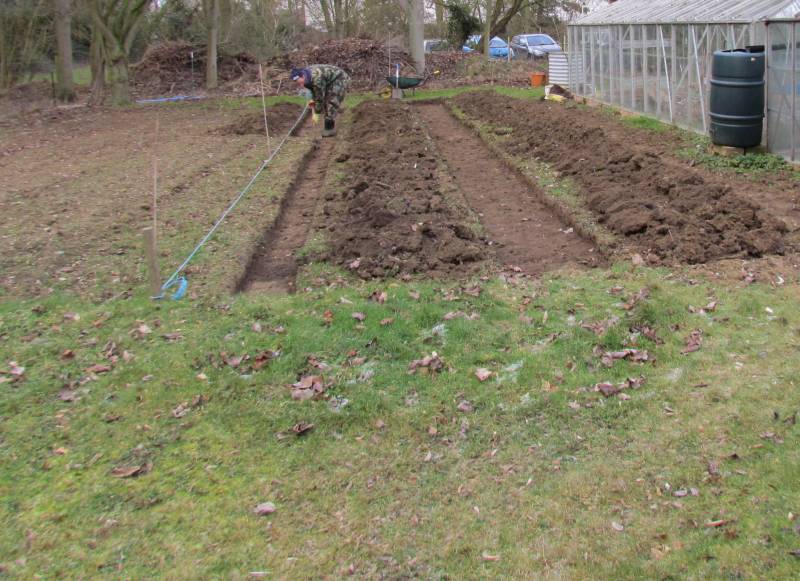
Lazy Raised Beds
A friend had some unwanted timber from a feature they were ripping out and kindly gave it to me. They were relatively slim rails, and some large pieces that I decided to use as end-stops for the beds
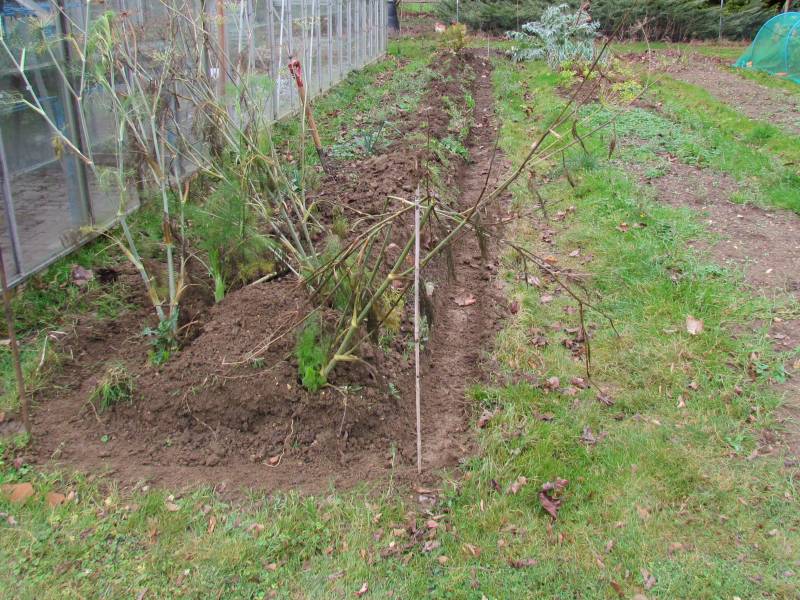
Raised Beds – Before
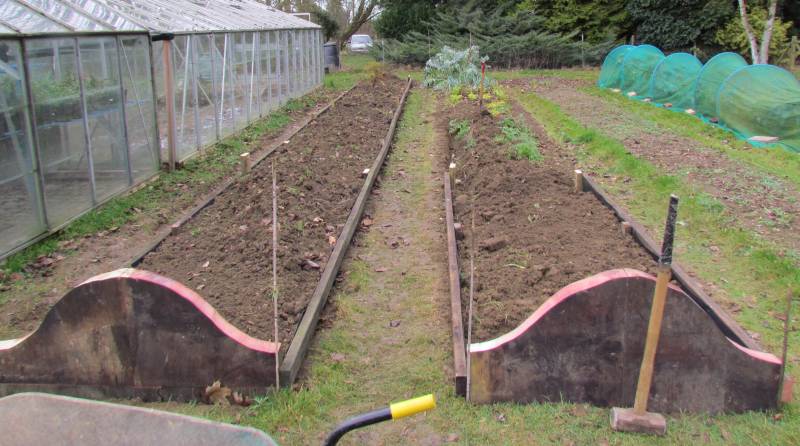
Raised Beds – After
Here is a close-up of the construction:
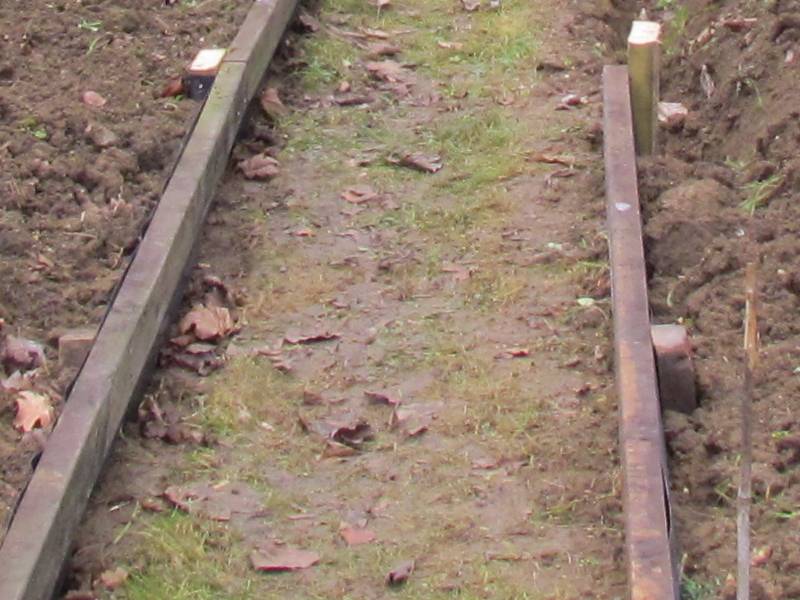
Raised Beds – Side Rails
I hammered some “posts” in. level, attached the side rails, and then put Damp Proof Membrane on the inside so that the board was not in contact with the soil, which will hopefully extend its life until it rots. The Damp Proof Membrane is wider than the boards, so retains the soil where the board does not quite touch the path (which I hope will also keep the board dry and prolong the rotting process)
I think the beds look much smarter now:

Raised Beds
In Autumn 2012 I thought that the vegetable patch would benefit from more shelter. With the benefit of hindsight! I should really have made this decision back in 2007 when I first created the vegetable patch. I have lived in Suffolk all my life and got used to it being flat and the wide open arable cropping meaning that trees and hedgerows only occur now-and-again. In 2012 we planted the Exotic Jungle garden in a shaded patch which had 20′ tall Leylandii around it. I thought this was going to be a poor site, not much light, competition for nutrients, and yet the plants have thrived and rocketed away; it can only be the benefit of the additional shelter. So, penny dropped, this Winter I am putting that right with shelter-belt planting. I’ve dug a trench on 3 sides for a hedge thinking I would plant Thuja (my preference is T. plicata atrovirens). However, what I really wanted was a Yew hedge, but was hesitant because of the delay before Yew will mature. In the end I decided to plant a double-row hedge with Yew and Thuja, the plan being to use the Thuja to provide shelter, more quickly, and then remote the Thuja once the Yew is a reasonable size. Whether the two will be happy companions remains to be seen.
I’ve taken some photos which will probably only be useful once the plants start to grow in order to show the before/after.

Vegetable Hedge – East side looking North

Vegetable Hedge – East side looking North

Hedge – Nov 2012

Vegetable Hedge – East side looking South

Vegetable Hedge – East side looking South

Vegetable Hedge – North side looking West
Digger squeezed into position:

Vegetable Hedge – North side looking West

Vegetable Hedge – North side looking West
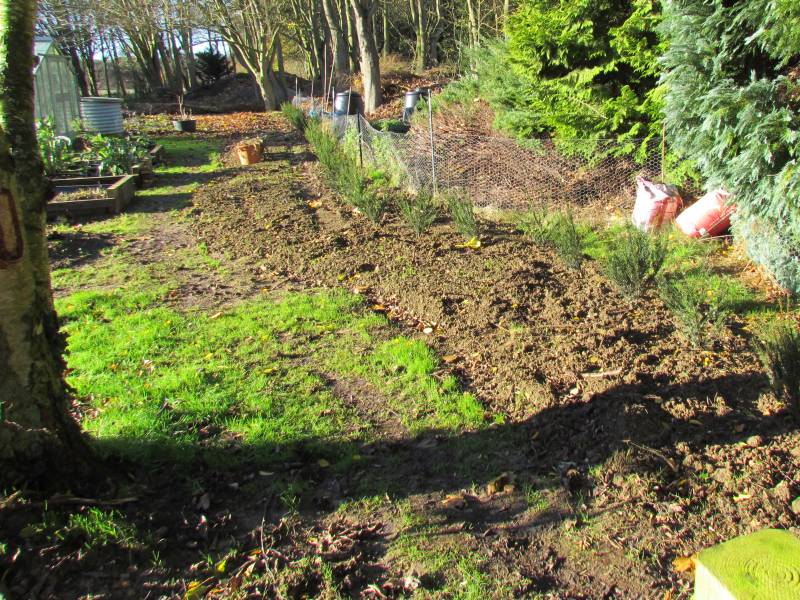
Hedge – Nov 2012

Vegetable Hedge – West side looking North
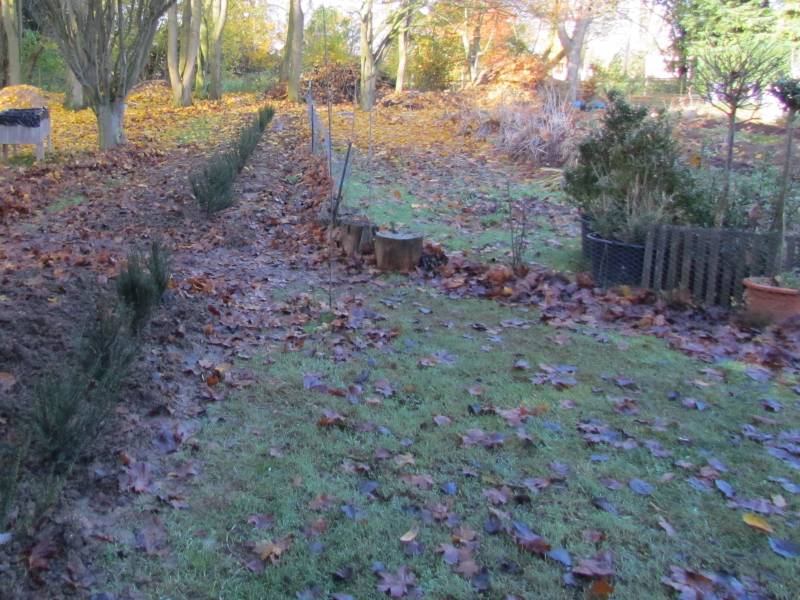
Hedge – Nov 2012
Next page (2014 Woven Weed Suppressing Membrane), or next topic: Greenhouses
I have put an electric fence around my veg. plot. No problem with rabbits since.
Regarding the “beds”, I have done mine similar, 1metre beds and 40cm paths, dug a full spit before fining down with the Mantis Tiller (electric).